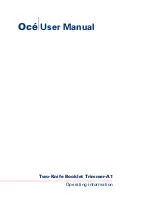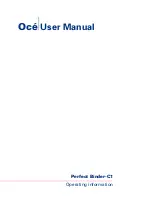
number systems
Three number systems are commonly used with printers:
decimal
is base 10 and uses the digits 0, 1, 2, 3, 4, 5, 6, 7, 8, and 9.
(This is the most familiar system.)
hexadecimal
(hex) is base 16 and uses the digits 0, 1, 2, 3, 4, 5, 6,
7, 8 9, A, B, C, D, E, and F. This is frequently used by
programmers. Any decimal number between 0 and 255 can be
expressed by a two-digit hex number.
binary
is base 2 and uses only the digits 0 and 1. All information in
computer systems in handled in binary form to represent electrical
signals that are on or off. A binary digit is often called a bit; any
decimal number between 0 and 255 can be expressed by an eight-bit
binary number.
on line
When the printer is on line, it is in communication with the computer
connected to it.
paper-out sensor
A small switch behind the platen that sends a signal when it is not in
contact with paper, causing the
PAPER OUT
light to go on.
parallel interface
See interface.
parity
Parity is a method for a computer and printer to check the reliability of
data transmission.
pitch
Indicates the number of characters per inch (cpi). The standard is 10
pitch.
platen
The black roller that provides a backing for the printing.
print quality
Your printer has two types of print quality: draft and Near Letter
Quality. Draft is for high-speed, draft quality jobs; Near Letter Quality
is for final, polished documents.
Glossary
G L - 5





































